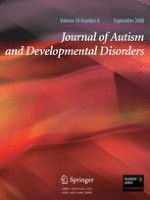01-09-2008 | Original Paper
Principals’ Attitudes Regarding Inclusion of Children with Autism in Pennsylvania Public Schools
Gepubliceerd in: Journal of Autism and Developmental Disorders | Uitgave 8/2008
Log in om toegang te krijgenAbstract
This study sought to identify the attitudes that principals held regarding the inclusion of students with disabilities, and the relationship between their attitudes and their placement recommendations for children with autism and to identify the relationship between specific demographic factors and attitudes toward inclusion and placement. A stratified random sample was drawn from the active list of 3,070 principals in the Pennsylvania public schools. From 1,500 surveys, 571 principal responses were received. The most significant factor in predicting both a positive attitude toward inclusion of children with disabilities and higher recommendations of placements for children with autism was the principal’s belief that children with autism could be included in a regular education classroom.
